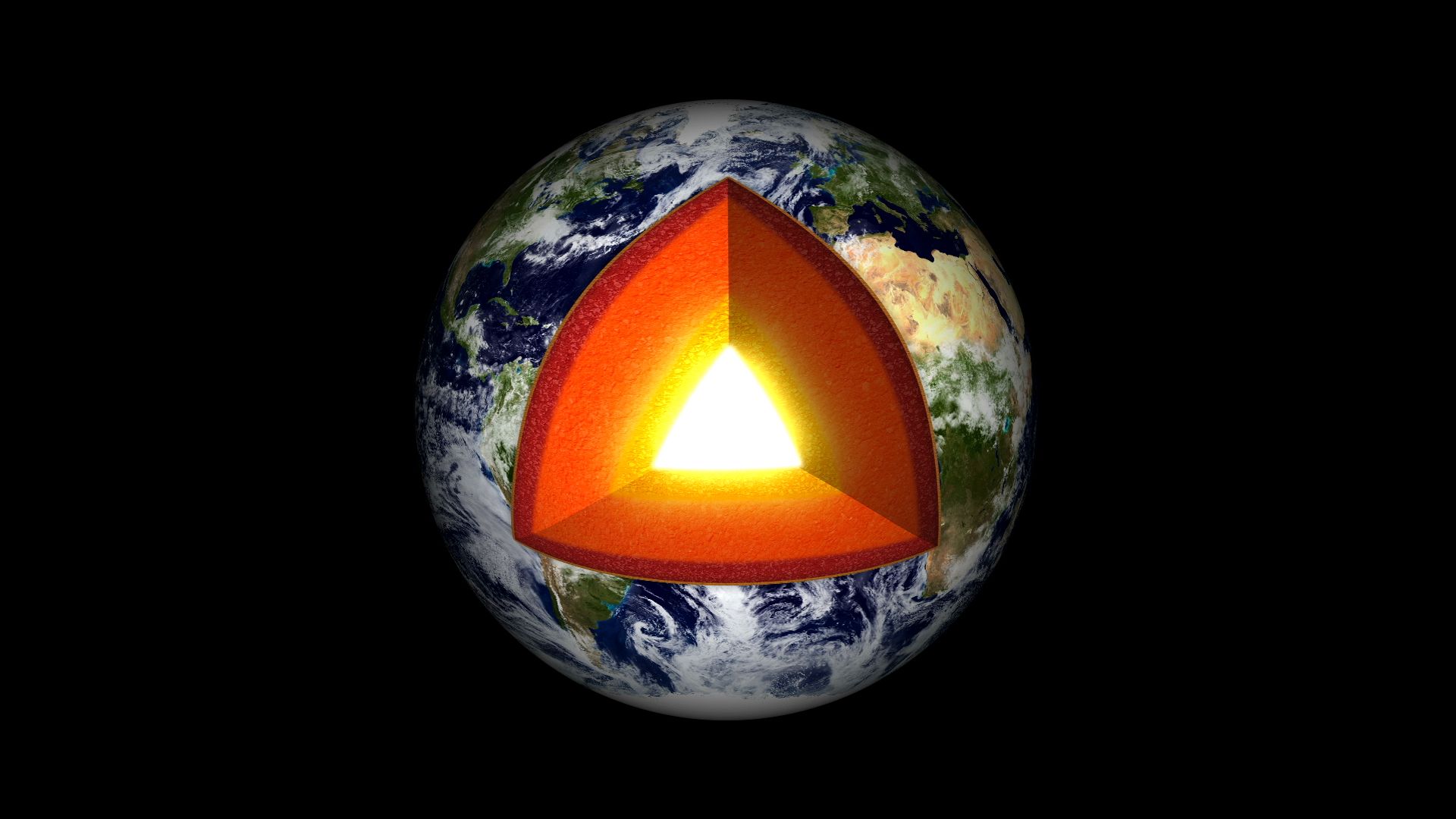
Updated | On Monday, the British tabloid The Daily Mail introduced us to "hollow-Earthers," who they say may number in the thousands and believe, yes, that the Earth is empty inside. "A group of conspiracy theorists believe the Earth is hollow—and that superior 'alien' humans, Vikings and Nazis live inside. Instead of thinking that the world is flat, they are convinced that it actually contains a paradise at its core that resembles the Garden of Eden," the story reports. The garden is lit by a central sun, say the conspiracists.
Poor geology isn't always the sexiest of sciences: It often deals with the distant past or with processes that happen slowly—until a sudden eruption, quake or other phenomenon. But that's no reason to disregard literally everything geologists and planetary scientists have taught us about the Earth and other celestial bodies for a conspiracy theory, so let's spend some quality time debunking this latest story about Earth.
The Earth is very much filled, Vikings and Nazis aren't superior "alien" humans, and there's definitely not a sun inside of Earth. Let's break this one down a bit.
Earth's structure is a bit like a candy, covered by a thin outermost layer of rock called the crust. Beneath the crust comes two thick layers of molten rock called the mantle, then the liquid outer core and deepest of all the solid inner core. Of course, no one has been down to the mantle or the core—but scientists have the tools to know that they must be there.
In fact, our understanding of the core began with Isaac Newton, who realized that because of how planets move and the way gravity is tied to a body's mass, the planet can't even be solid crust: Overall, it must be twice as dense as the rock we see every day here at the surface. If Earth were truly hollow, the planet as a whole would be much lighter and gravity much weaker—perhaps so weak we would all float away.
Read more: We Asked Two Flat Earthers: What About the Other Planets?
Later scientists have built on Newton's understanding with the development of remote sensing technology. For example, they can puzzle out the mantle's density and other characteristics based on how waves travel through the material during an earthquake.
Scientists can also study how the mantle affects life here at the surface of Earth, since the mantle drives plate tectonics. Earth's surface is made up of dozens of chunks of rock called plates, which float above the mantle. As molten rock in the mantle churns, it causes these plates to drift toward and away from each other. That dynamic in turn causes volcanoes, where plates collide and older crust is recycled, and mid-ocean rift valleys where new rock is born as plates separate.
And as to that interior sun, what might be way more mind-blowing than any conspiracy theory is that a star could actually fit within our planet: Although our sun is huge, more than 850,000 miles across, not all stars are. Superdense neutron stars are less than a dozen miles across, much smaller than Earth, which is just shy of 8,000 miles across.
Of course, there would be other consequences of being that near a neutron star. The star's surface is millions of degrees and packs billions of times more gravity than Earth, and if the star, like many neutron stars, happens to be a pulsar, it will also be producing some nice friendly deadly radiation beams.
And someone definitely would have noticed if there were giant gaping holes at the North and South poles, as the hollow Earth theory requires, considering humans have explored both poles extensively.
This article has been updated to include more information about Earth's mantle and its impact above the surface.
Uncommon Knowledge
Newsweek is committed to challenging conventional wisdom and finding connections in the search for common ground.
Newsweek is committed to challenging conventional wisdom and finding connections in the search for common ground.
About the writer
Meghan Bartels is a science journalist based in New York City who covers the science happening on the surface of ... Read more
To read how Newsweek uses AI as a newsroom tool, Click here.








